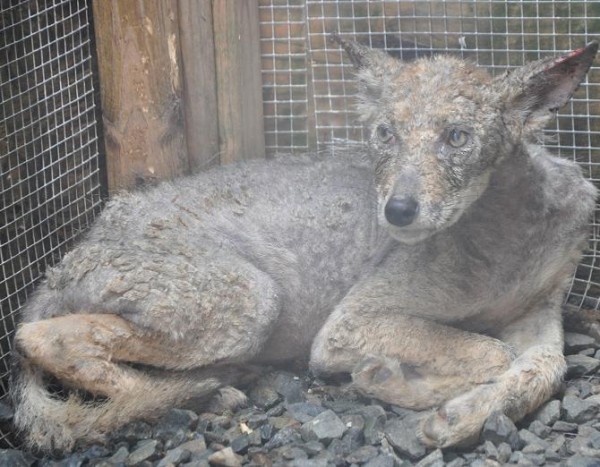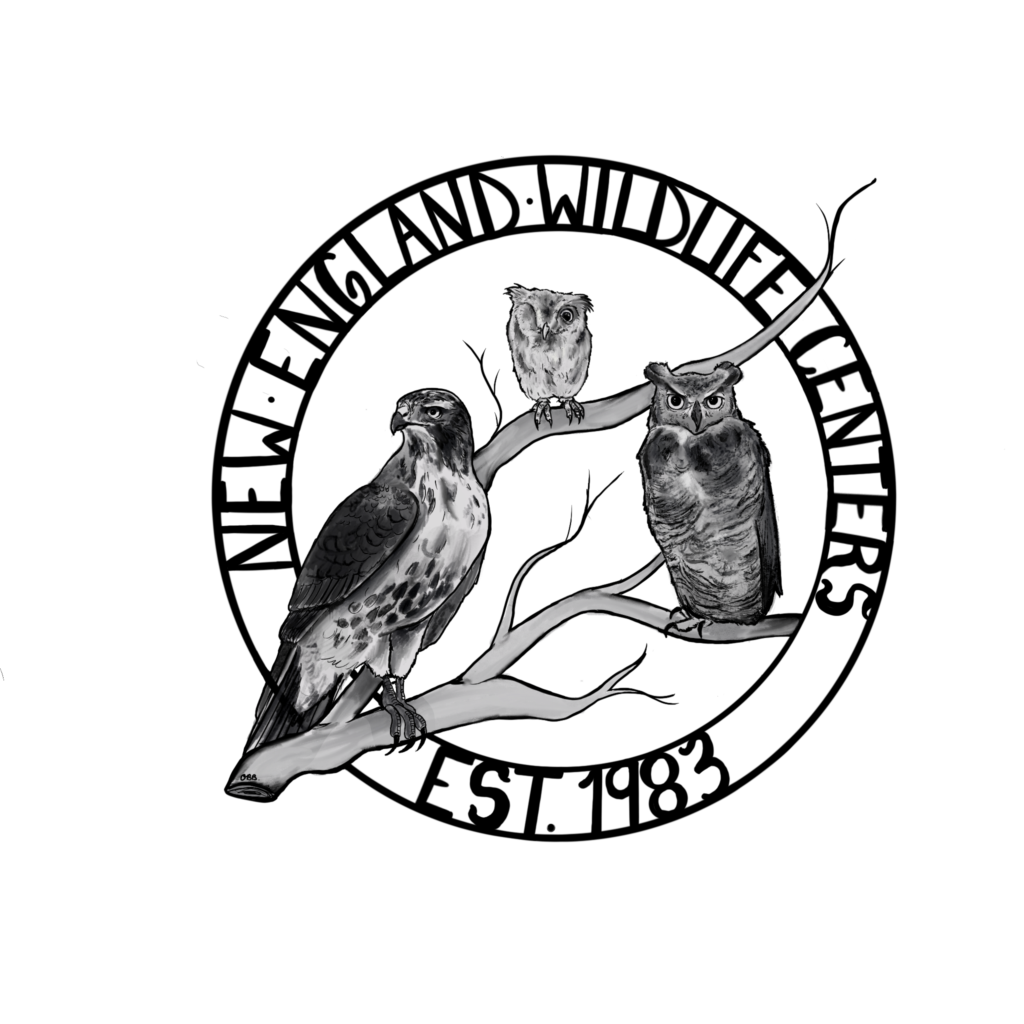
You wouldn’t want to meet this poor bugger in a back alley. This male adolescent coyote is suffering horribly from Sarcoptic Mange (mites). Mites are even worse than having really bad fleas. At least fleas stay on top of your skin. This Coyote was admitted by Woburn animal control and is suffering from a severe case. Dr. Rob says that the coyote also has a secondary bacterial infection. As you can see, he is very thin. This teen coyote is being treated with an antiparasite, antibiotics and plenty of good food to fatten him up. Although he looks awful, this regiment usually works. However, because of the severity of his mange, his prognosis is only fair. It will take a while, maybe six weeks or more, for him to recover. The Department of Fisheries and Wildlife will be placing an ear tag on the coyote to track him so that they can better understand the biology of these facsinating creatures. Our whole team is working hard so that this coyote can heal and be released to the wild.
“Like all the wildlife we help, this is the best biology lesson we can give to undergraduate students,” says Dr. Rob. First hand exposure (with appropriate supervision and safe gaurds) is the best way to teach and to connect learners to wildlife and to the out-of-doors. People protect what they know and love.
When the coyote arrived, interns from Drexel University, the University of Rhode Island and the University of California at San Diego all gathered round the surgery table and assisted Dr. Rob while he sedated the animal. With veterinary and veterinary technician supervision, undergraduates are feeding and providing medication. While they are working and in follow up seminars, all of our students are learning pathophysiology (what causes the disease), epidemiology (how it spreads) and pharmacology (what meds are used and why). They are also learning about coyote’s biology, anatomy, physiology and their natural history.
Sacropic Mange is a public health risk (but it is easily treated in most humans). Dogs that come into contact with wildlife (sticking their nose in a fox hole for example), can catch it. They can pass it on to us when we give them a hug or pat them. Most of us already know not to feed wildlife and to keep our distance. But it is a good reminder.
We will keep you updated on this guy. 🙂

